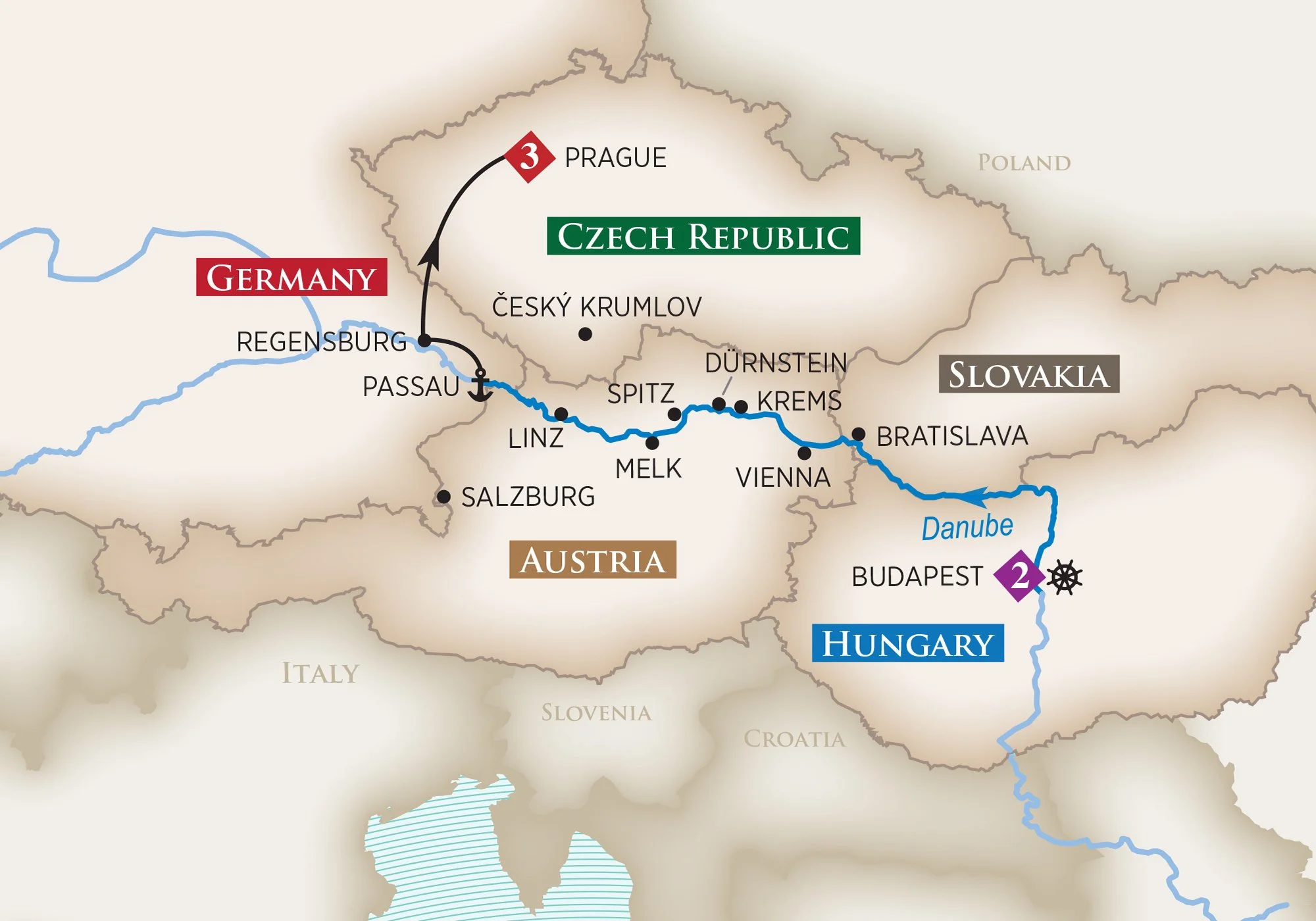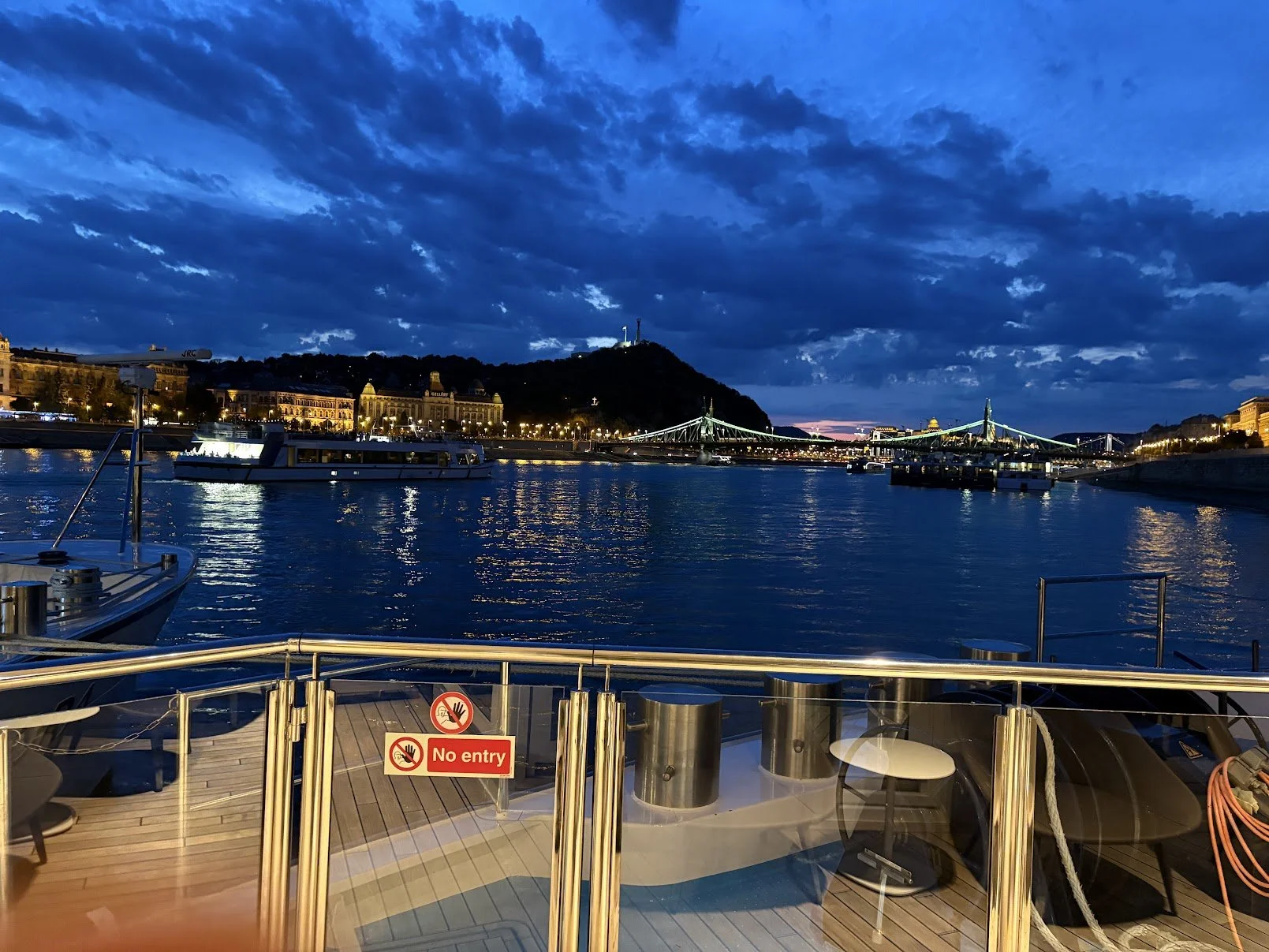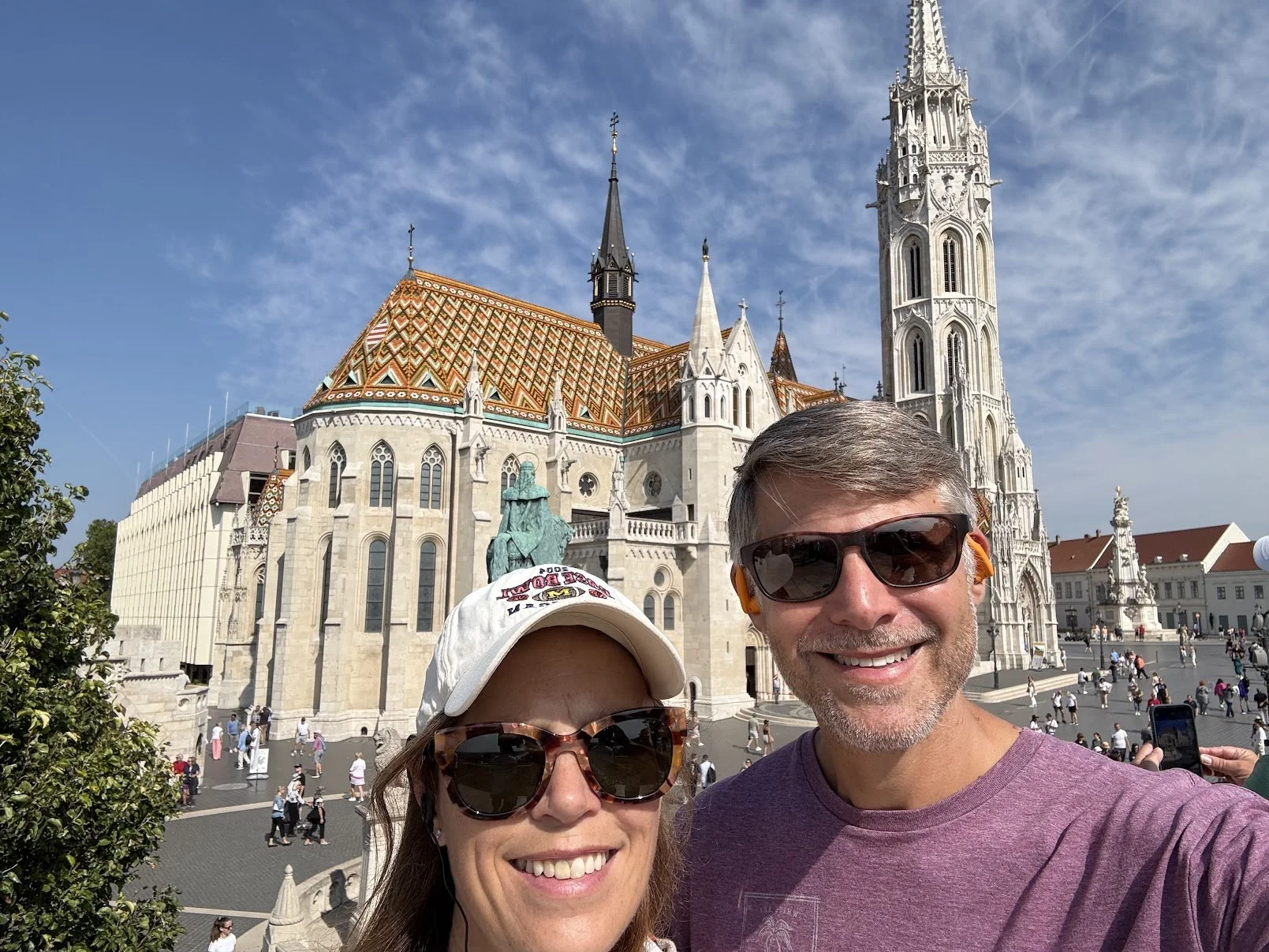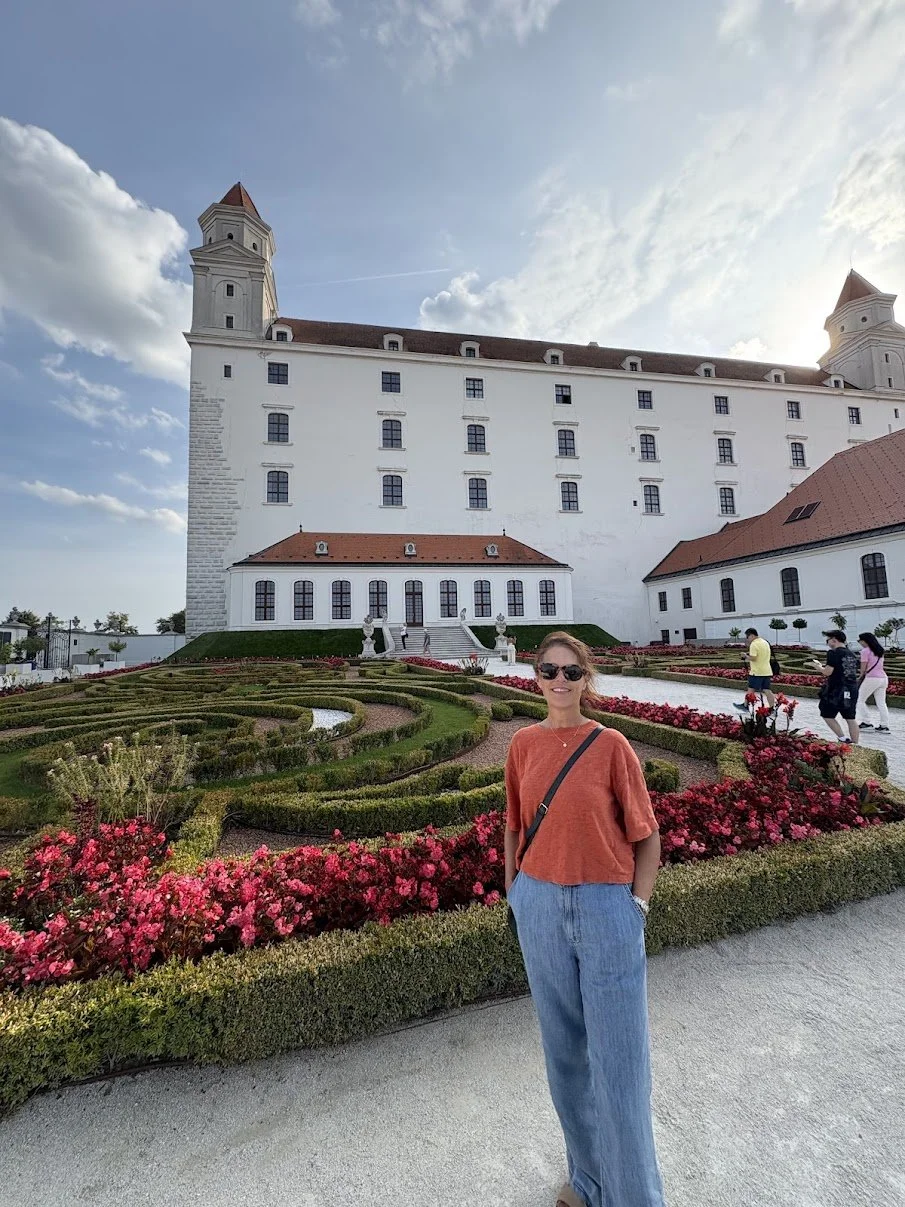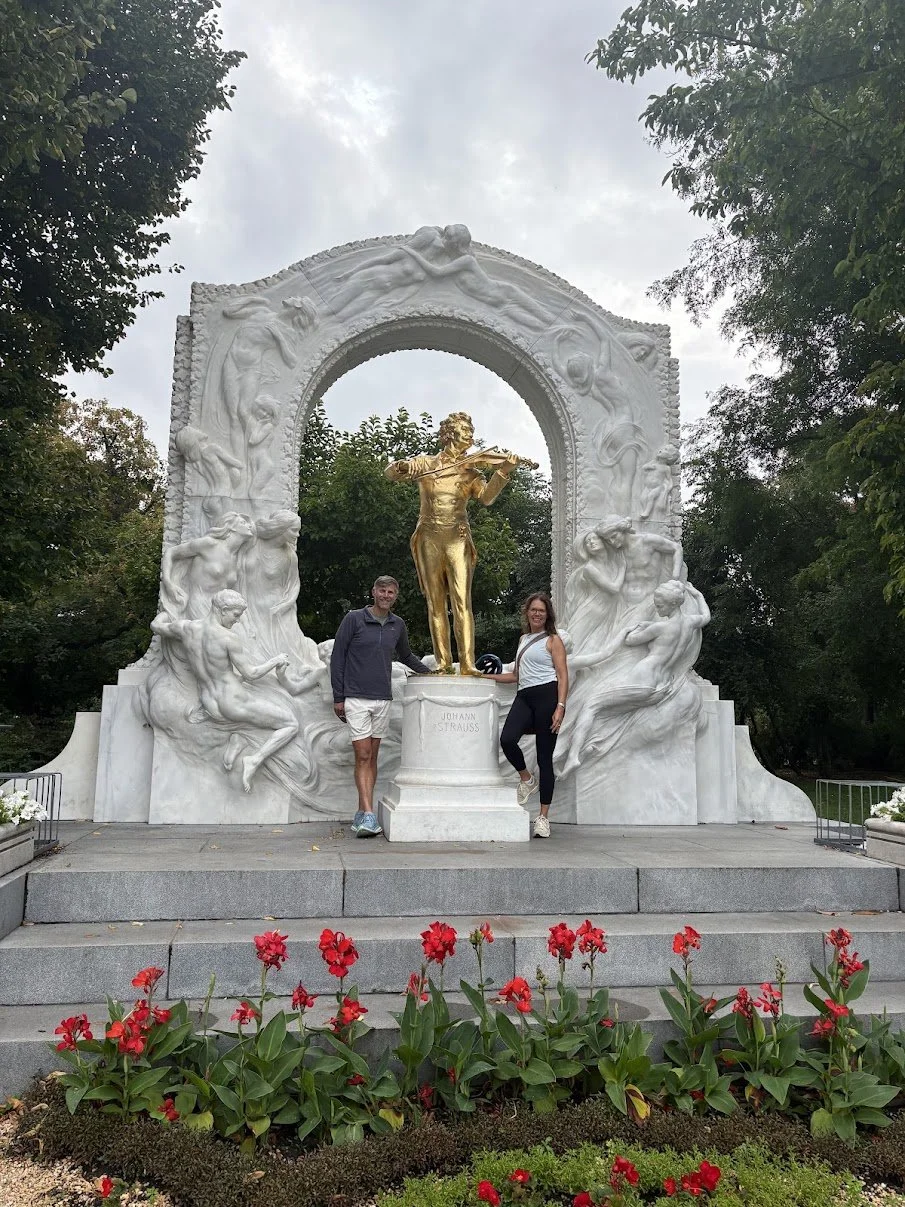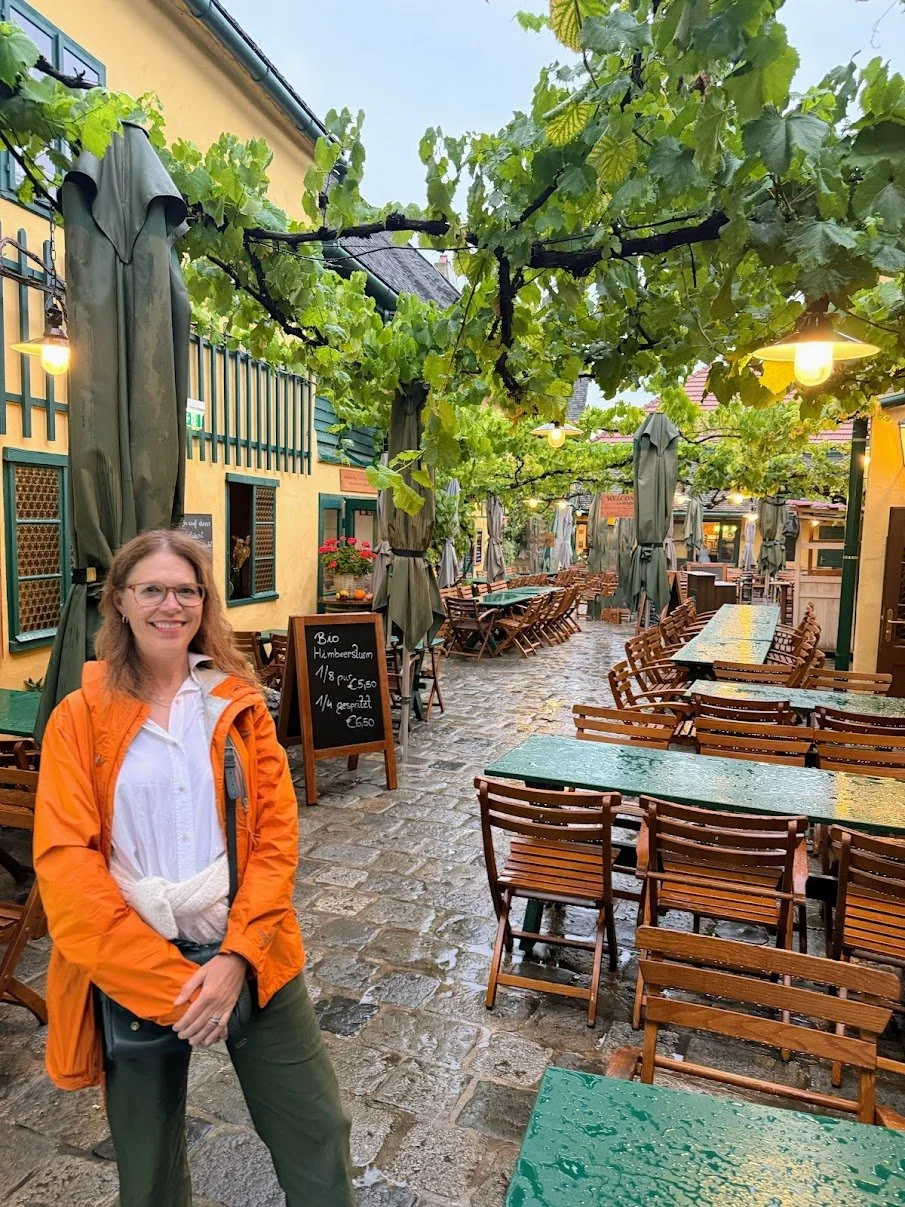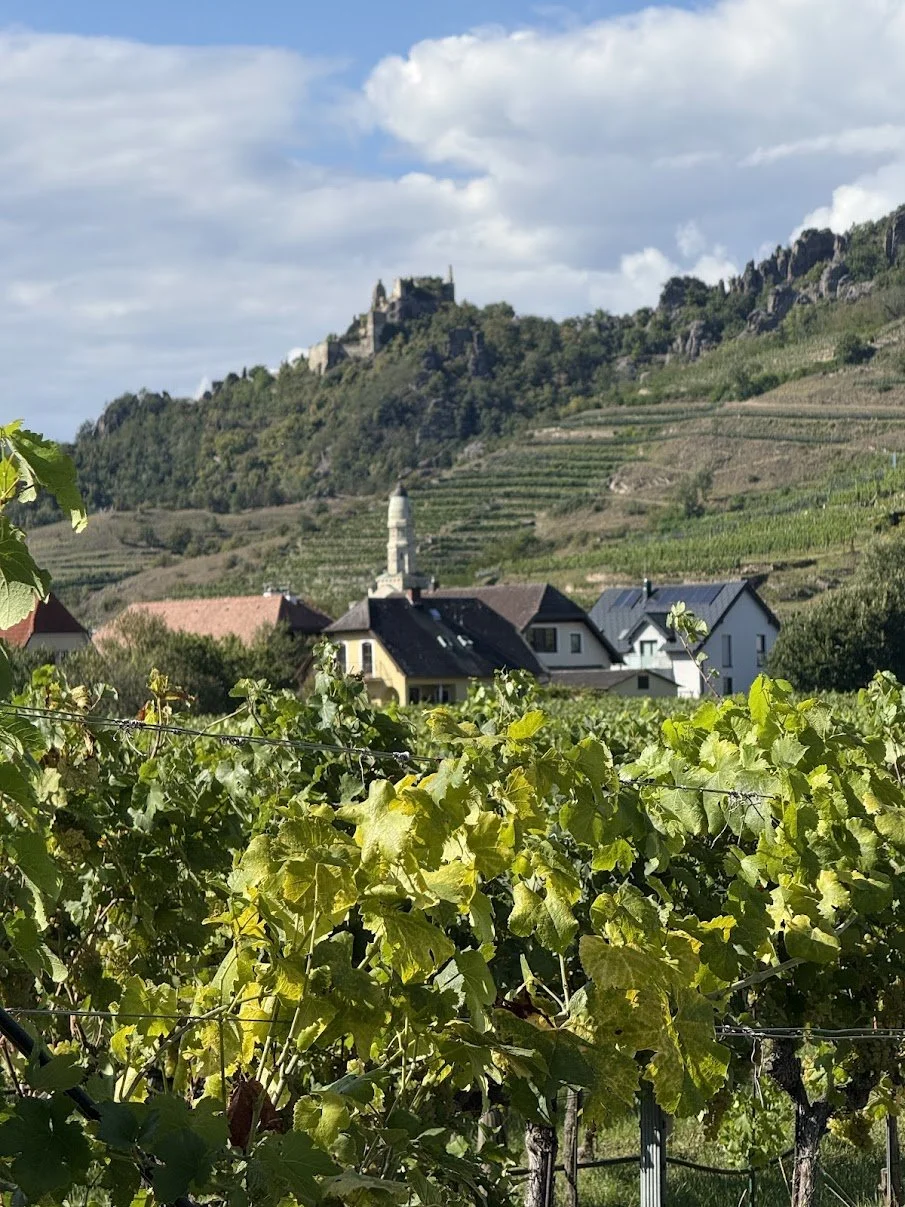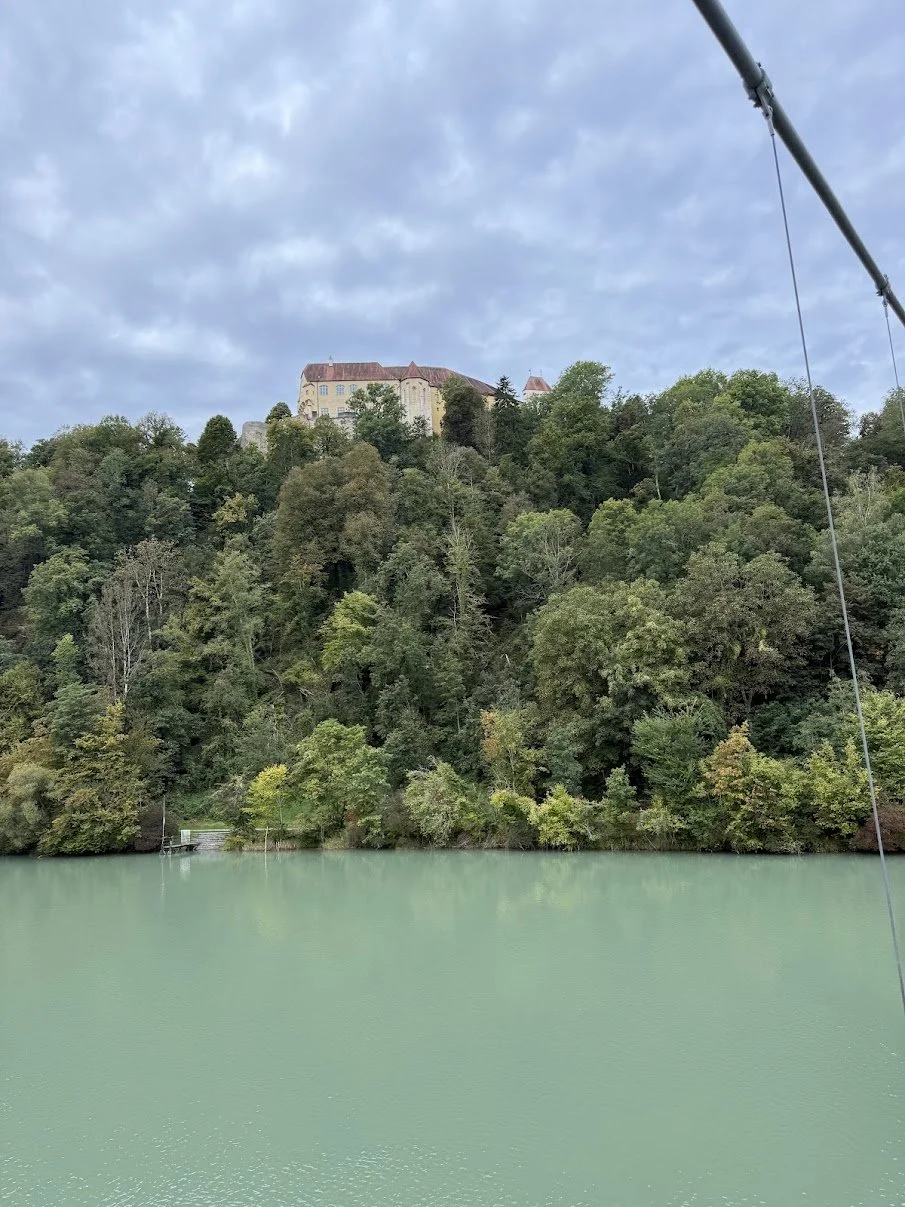Sailing the Blue Danube: Our 7-Day Upper Danube River Cruise Itinerary
There is a distinct, almost mythic magic that lingers over the Danube River. While the water may not always appear the enchanting "blue" of the famous Strauss waltz, the views it delivers—from the grandeur of imperial palaces to the intimate charm of riverside villages—absolutely sing. This perfect blend of urban culture and natural beauty is why the Upper Danube route is arguably the best and most popular river cruise in Europe. We set sail ourselves to trace the river's storied course and bring you this first-hand review of the full itinerary.
The Danube is broadly divided into the Upper and Lower sections. The Lower Danube ventures into the Balkans, offering a beautiful but more rugged and less-traveled route through countries like Croatia, Bulgaria, and Romania. The Upper Danube flows through Germany, Austria, and Slovakia, with Hungary connecting the two sections. The most popular and celebrated heart of river cruising is the Upper Danube, as it allows you to experience the very best of Central European culture, including the "Big Three"—Budapest, Bratislava, and Vienna—along with the picturesque scenery and history of Austria’s Wachau Valley. It’s the route we chose to sail, and what this blog post is focused on. If you want more information on European river cruising in general, please read our European River Cruising 101 blog post.
The Upper Danube route can either start in Germany, heading east and ending in Budapest, Hungary, or start in Budapest, heading west, and ending in Germany. There really is no “better direction.” The deciding factors for which specific Upper Danube cruise you should take really boil down to 1) which dates work best for your schedule and 2) which specific cities are visited. Most river cruise lines all stop at the same key places in Hungary, Slovakia, and Austria. Where you see differences is in Germany. Our cruise stopped at Passau and Vilshofen, whereas others may stop at Nuremberg and/or Regensburg.
Our 7-Night Journey: Budapest to Vilshofen
For our own adventure, we chose the westward course: a spectacular 7-night sailing aboard AmaWaterways’ ship, the AmaMagna. From the sparkling lights of Budapest to the festive celebration in Vilshofen, Germany, here is our day-by-day account of the Upper Danube itinerary.
Day 1: Embarkation in Budapest, Hungary
Our adventure began as we landed in Budapest, often called the "Queen of the Danube." We arrived in the morning and, since our cruise was not embarking until 3 p.m., we immersed ourselves in Hungarian culture by visiting the famous Széchenyi Thermal Bath—a welcome relaxation after a long flight! Thanks to its abundance of natural hot springs, bathing in opulent, historic thermal baths is an essential and deeply ingrained part of the culture in Budapest. After entering the baths, you are shown to locker rooms where you change into your bathing suit. Shoes are required to be worn around the premises (water shoes, flip-flops, etc.), and you’ll want a towel. Both can be purchased on site. The main attractions are the three large outdoor pools surrounded by imposing, architecturally stunning old buildings. There are dozens of lounge chairs and a café from which you can order snacks and drinks. One pool is reserved for laps (a cap is required), one is a lounging hot pool, and the other is the “adventure pool” with several jets and sprays to enjoy, along with a crazy lazy river vortex that whisks you round and round. Very cool! The adventure continued inside, where there is a maze of various rooms, each with a different offering of pools, steam rooms, and saunas, each set at a different temperature. David loves a good steam and sauna and he was in heaven. However, even David couldn’t handle the Vulcan sauna room set at 160 degrees! We were there on a Sunday and it was packed with families (though no young children—you must be 14 to enter) and groups of friends—definitely quite the scene!
After drying off, we leisurely strolled back to our cruise ship, taking in the city’s sights along the way. As we settled into our stateroom and explored the ship, we felt the excitement for the week ahead. That first evening as we ate dinner on the ship, we enjoyed views of Budapest’s beautiful scenery—the magnificent Parliament building, bridges, and castle hill—all lit up at night.
Day 2: Budapest – The Queen of the Danube
Budapest is fascinating in that it is essentially two towns divided by the Danube. There’s Buda, which is quite hilly, and Pest, which is quite flat—both are equally impressive.
Buda Side: We opted for an active adventure in the morning, taking hiking up to the Castle Hill to marvel at the fairytale turrets of Fisherman’s Bastion. The breathtaking panorama of the city and the Danube below, with the striking mosaic roof of Matthias Church nearby, was unforgettable.
Pest Side: In the afternoon, we explored the Pest side via a walking tour, admiring the colossal Hungarian Parliament Building, the historic Heroes' Square, and the moving “Shoes on the Danube Bank” memorial.
Late afternoon, we gathered back on board to begin our sail up the Danube, which included scenic cruising along the Danube Bend, passing by some of Hungary's oldest settlements like Esztergom, Visegrád, and Szentendre. We definitely felt that we were leaving a lot of Budapest yet uncovered and look forward to returning at some point. That’s what is nice about a cruise—you sample many different cities then decide what you want to visit more in-depth on a later trip.
Day 3: Bratislava, Slovakia – The Coronation City
Our next stop was Bratislava, the capital of Slovakia, a city that has earned the title "Coronation City of Kings," having hosted the crowning ceremonies of 11 Hungarian kings and queens. It’s also popular with the younger set for its bars, clubs, and nightlife.
Here, we had one of those wonderful choices that makes river cruising so special. We opted for the special "Tastes of Slovakia" tour, sampling local culinary delights, but other options included a historical walking tour through the city or a more active hike to the city's gleaming castle. Our tour included a walk through downtown ending at a beer garden where we settled in to “explore” various local beers, meats, and cheeses. Afterwards, we went by ourselves to climb up to the castle looking over the city for stunning views of the area.
Day 4: Vienna, Austria – Imperial Grandeur
Vienna, the heart of Imperial Europe and classical music, offered a wealth of gems. We have visited Vienna a few times before, so we were looking forward to taking a slower pace this time and enjoying the local culture rather than ticking the boxes of the major sites. The cruise afforded that opportunity by offering full-day or partial-day tours. We did a half-day excursion so we had the afternoon and evening free, especially as we didn’t have to be back on board until 10 p.m.
We spent our morning soaking up the city's regal splendor, with a bike tour that showcased magnificent sites, including the majestic Opera House and the former Imperial Palace of the Habsburgs. The bike lanes in Vienna are well marked and very easy to navigate, especially around the canals, making it a great place for a bike tour.
After lunch aboard the ship, we headed back into town to have a good stroll and try out some of the famous Viennese cafés, enjoying coffee and sweets while we played backgammon. It was a lovely, relaxing afternoon. Most of our shipmates enjoyed a tour of Schönbrunn Palace, a must-visit if you haven’t been before.
Rather than join the optional Vienna concert offered by AmaWaterways, we took the opportunity to stay on shore for dinner by visiting a heurigen, a wine garden, up in the vineyard-dotted hills surrounding Vienna. What other major European city do you know has vineyards within its city limits? We love heurige because they serve great locally produced wines, great charcuterie boards, and other local favorites like schnitzel, all in a beautiful, relaxed setting.
We were able to walk off all that great Viennese cuisine by strolling back down the hill to the river and our boat before it left for the next destination.
Day 5: The Wachau Valley – Epicurean Delights
This was a turning point for the cruise. The first half was spent in three larger capital cities. The remainder of the trip was spent amongst beautiful countryside and smaller villages. This day was a scenic masterpiece, cruising through the Wachau Valley, a UNESCO World Heritage site known for its medieval towns and terraced vineyards.
Dürnstein: We docked in the charming town of Dürnstein. We hiked up to the Dürnstein fortress and indulged in all things apricot (brandy, jam, chocolate, etc.), a regional specialty. Honestly, the town, its setting, and the shops were all very cute, but it was quite overcrowded with all the various river cruises. We have written blogs (see here) about the impact of tourist overcrowding in Europe. Today, we saw it firsthand.
Spitz: Thankfully, this all changed in the afternoon, as we set off for a 16-mile bike ride along the river amongst the rolling hills, vineyards, and small villages. We are not huge bike riders, but we loved all of our bike rides on our trip. Biking allows you to experience the scenery much more so than if you were on a bus but cover more ground than just walking. The ship then met us at the end of our ride so we could climb back aboard.
The Wachau Valley is famous for its vineyards and wines, an experience we enjoyed firsthand with an evening tasting organized by the cruise line in Spitz. We visited a local winery and sampled a variety of delicious young and old white wines in the beautiful surroundings of their ancient, barrel-vaulted cellar.
Day 6: Surprising Linz
Linz, a "UNESCO City of Media Arts," served as a gateway to more immersive, full-day excursion choices. The boat offered full-day excursions to Salzburg or Cesky Krumlov (both over two-hour bus rides away). Most passengers elected one of these options, for good reason, as they are both excellent places to visit. However, we were lucky enough to have previously visited both on past trips, so we stayed behind and explored Linz.
Honestly, our expectations for Linz were low, as it seemed to mainly serve as a hopping-off point for the all-day excursions, but we were pleasantly surprised. Walking around the old town with a vibrant farmers market, fortress on a hill, and relaxing cafés to see and be seen really encapsulated much of the overall Austrian experience for us. We had a lovely few hours exploring the town and being amongst the locals.
In the afternoon, we chose to stay aboard the ship and enjoy the sun deck, pool, hot tub, and some cocktails.
Day 7: Passau and Vilshofen – Bavarian Celebration
Our journey culminated in Germany, starting with the beautiful city of Passau, known as the "City of Three Rivers," where the Danube, Inn, and Ilz rivers meet.
Passau: We arrived in Passau first thing in the morning, marveling at the Gothic and Italian Baroque architecture. We took yet another bike ride, this time a 14-mile journey alongside the peaceful River Inn bordering Austria and Germany, venturing through small towns as well as dark forests. We’d have loved to spend more time in the town of Passau itself—such a beautiful, vibrant town—but the bike ride was definitely worth it.
Vilshofen: We sailed the final stretch to Vilshofen, where AmaWaterways offered an exclusive (and a bit cheesy) Bavarian Oktoberfest celebration! Complete with traditional music, beer, and pretzels, it was a festive way to celebrate the end of the week’s sailing.
Day 8: Disembarkation in Vilshofen, Germany
After one last breakfast onboard, it was time to disembark from our river cruise. Most fellow cruisers headed to Prague or Regensburg on a post-cruise tour, or else they had transfers organized by the cruise line to wherever they were headed, whether that be an airport to fly home or another town to visit. Our return flight was through Munich, so we decided to add on a night there (it’s one of David’s favorite cities and he couldn’t stand being so close and not spending time there!). As Germany has an excellent train system (and we didn’t have too much luggage), we were able to walk from the ship to the local train station where we took a direct two-hour train to Munich.
We ended up spending less than 24 hours in Munich but, wow, did we accomplish a lot of eating, drinking, and walking! We stayed at the beautiful and very comfortable Cortiina Hotel, just two blocks from the Marienplatz. This enabled us to go everywhere we wanted on foot, including a beer garden for lunch, a visit to the Munich Residenz palace, a stroll through the English Garden watching the surfers do their thing, and a stop at the famous Hofbräuhaus to enjoy more beer. Along the way, we discovered the car show was going on, which was the biggest and best car show we had ever seen. It took place outside along the streets and among the courtyards of Munich, where the auto manufacturers built amazing temporary high-tech buildings to show off their latest vehicles. It was packed, but lots of fun!
We ended the day at a local German pub for yet more food and beer (can you tell we love German cuisine?). Sadly, the next morning we made our way to the Munich airport for our journey back home.
Why the Upper Danube is a Must-Do
We came seeking the spirit of the "Blue Danube," and we found it in a thousand shades: the imperial gold of Vienna, the glittering nighttime lights of Budapest, and the emerald green of the Wachau Valley vineyards. The Upper Danube itinerary is a must-do because it is a living history book, a classical concert hall, and a scenic nature trail all rolled into one. For a journey that connects the best of Central Europe with unmatched convenience and unforgettable views, look no further. This is, without a doubt, a classic for a reason.


